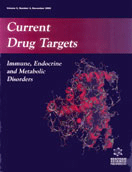Abstract
The goal to attenuate inflammation without inducing generalized immunosuppression has focused the attention on chemokines, a family of chemotactic peptides that regulate the leukocyte traffick into tissues. However, the development of drugs that block ckemokine activity may be hampered by the observation that some chemokines display pleiotropic biologic functions. For example, the chemokines CXCL9 / Mig, CXCL10 / IP-10, and CXCL11 / I-TAC exhibit the ability to recruit different leukocytes subsets, the capacity to induce the proliferation of vascular pericytes as well as powerful anti-tumor effects, which are mediated by a common receptor, named CXCR3. Because of their pleiotropic biologic effects, these chemokines have been proposed as possible therapeutic targets in cancer, allograft rejection, glomerulonephritis, diabetes, multiple sclerosis, and autoimmune disorders of the thyroid. The chemokine CXCL4 / PF4 shares several activities with CXCL9, CXCL10, and CXCL11, including angiostatic effects, although its specific receptor has remained unknown for a long time. Recently, we provided evidence that the different functions of CXCL9, CXCL10, and CXCL11 on distinct cell types can be at least partly explained by the interaction of these chemokines with two distinct receptors. Indeed, in addition to the classic form of CXCR3 receptor, which we have renamed as CXCR3-A, a novel CXCR3 receptor variant (CXCR3-B) was identified, that not only mediates the angiostatic activity of CXCR3 ligands, but also acts as functional receptor for CXCL4. In this review, we focus on the accumulating evidence demonstrating the pivotal role of CXCR3-binding chemokines in several human diseases. Studies based on CXCR3 targeting have shown its importance in different pathologic conditions and orally active small molecules capable of inhibiting this receptor are now being developed in order to be tested for their activity in humans.
Keywords: angiogenesis, inflammation, transplantation, tumor
 1
1


















